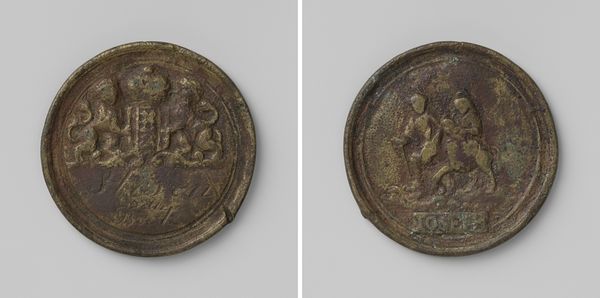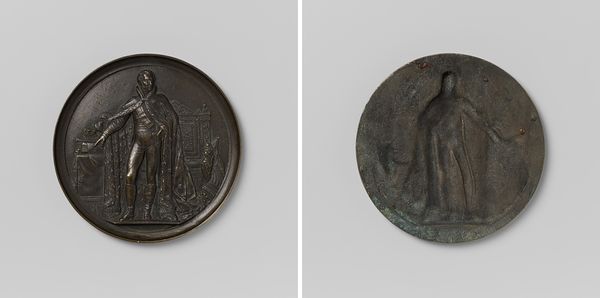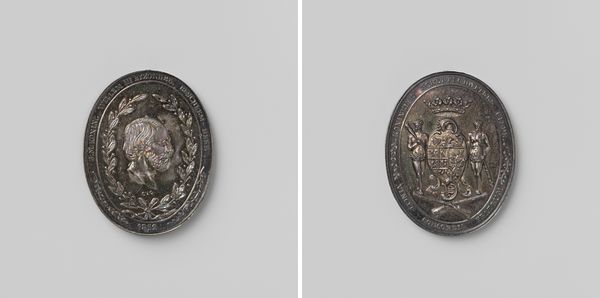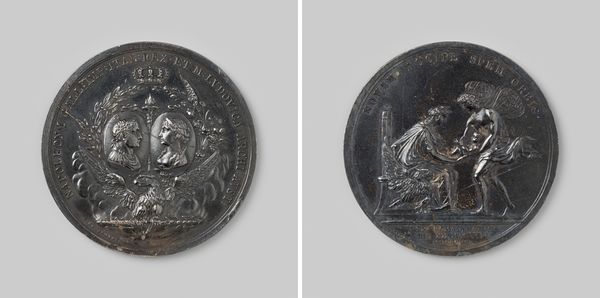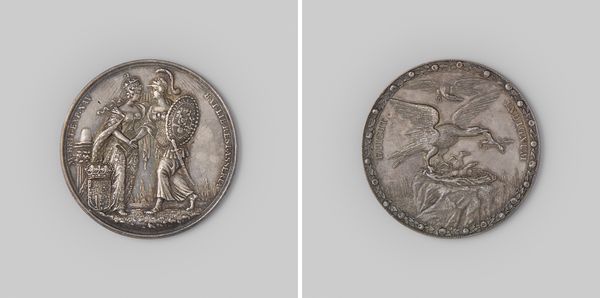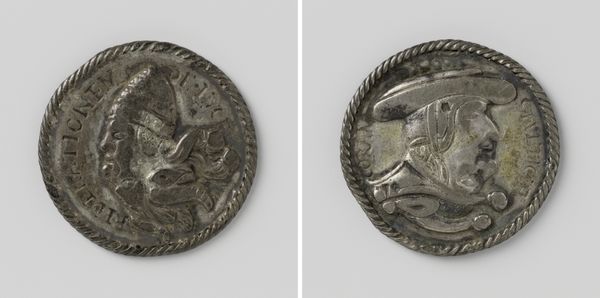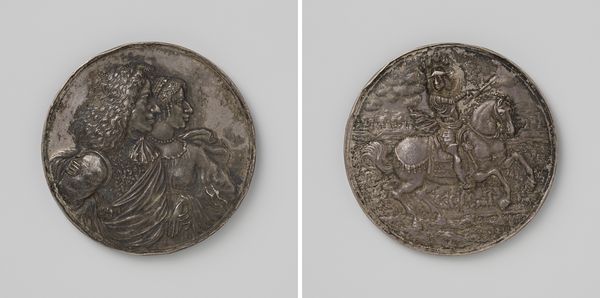
metal, sculpture
#
portrait
#
neoclacissism
#
dutch-golden-age
#
metal
#
sculpture
#
sculpture
#
history-painting
Dimensions: diameter 3.7 cm, weight 8.73 gr
Copyright: Rijks Museum: Open Domain
Editor: So here we have a metal sculpture portraying "Willem V, prins van Oranje-Nassau," dating from 1787 to 1795. It's at the Rijksmuseum. I find it interesting how this royal figure is depicted in such a relatively small and unassuming format. What strikes you most about this piece? Curator: The deliberate use of Neoclassical style to portray Willem V is intriguing. How does idealizing a ruler through this artistic lens affect his public image? Think about it. In this period, Neoclassicism, with its emphasis on order and virtue, served as a visual language for legitimizing power, especially in the face of growing revolutionary sentiment. What message does presenting Willem V this way send? Editor: It's like wrapping him in the respectability of antiquity, even as his actual power was, perhaps, declining. It’s a form of propaganda almost? Curator: Precisely. The Dutch Golden Age style hints to nostalgia, while this medal might seem like a mere historical object; it’s really engaged in the complex politics of imagery. The Rijksmuseum placing it on display further shapes its meaning today. Who gets remembered and how? Editor: So it's not just a portrait; it’s a carefully crafted statement meant to project a specific idea of leadership and authority. I never would've thought there was such intention! Curator: And the museum participates in this story today. It encourages us to ponder art’s public role and its connection to cultural narratives, doesn't it? Editor: Definitely! I’ll be sure to consider art's historical and political baggage from now on. Thanks for opening my eyes.
Comments
No comments
Be the first to comment and join the conversation on the ultimate creative platform.

